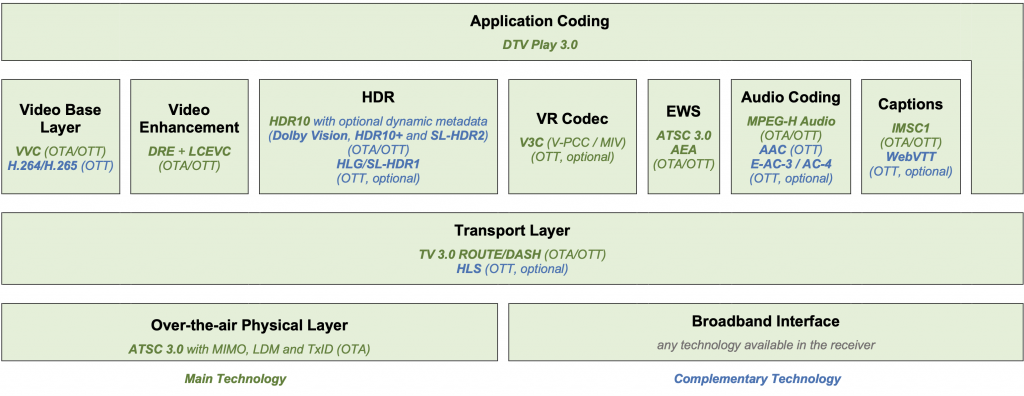In the Broadcast Olympics, Brazil takes the Gold Medal with ATSC 3.0’s Physical Layer

The “About” section of the ATSC home page describes ATSC as “an international (emphasis added), non-profit organization developing voluntary standards for digital television.” While ATSC 3.0 has already been adopted in the U.S., Korea, Jamaica and Trinidad & Tobago, and is strongly under consideration in India, the imprimatur of ATSC 3.0 as an international standard was sharpened considerably last week with the July 22 announcement that Brazil’s SBTVD Forum (a non-profit organization in Brazil established in 2006 for developing and promoting digital television standards and technologies) is recommending ATSC 3.0’s physical layer for the upcoming Brazilian “TV 3.0 Project” broadcast system. This latest announcement completes a four-year competitive selection process that started with a Call for Proposals in July 2020 and included extensive lab and field testing as well as detailed analysis of respondent proposals. The physical layer was the last of the subsystems to be selected in the process, among proponents ATSC 3.0, Advanced ISDB-T and 5G Broadcast (only ATSC 3.0 and Advanced ISDB-T performed well enough to advance from lab to field testing). The complete set of subsystem recommendations for TV 3.0 are shown in the graphic at the end of this blog.
The physical layer recommendation (which must be formally accepted by the Brazilian government before it is official) also has positive implications for the U.S. market. The selection of ATSC 3.0 both validates the excellent performance of the ATSC 3.0 standard compared to its competitors as well as promises the proliferation of additional millions of ATSC 3.0-based TVs. In Brazil, there are 71.5 million TV households in a population of about 220 million, 95.5% of households have a TV and terrestrial television is the most popular method of TV access for about 80% of the population. Achieving further mass economies of scale for manufacturers could in turn make the strategic decision to include ATSC 3.0 in all TV products even more attractive.
Just how much an impact the Brazilian decision might have can be gleaned by what happened in the first generation of digital TV system selections. Brazil adopted a digital TV broadcast system based on the Japanese Integrated Services Digital Broadcasting-Terrestrial (ISDB-T) broadcast standard in 2006. Brazil was the first country outside of Japan to use this system which had been adopted as the Japanese standard in 1999 and approved for commercial transmissions in Japan in 2003. Between 2006 and 2010, many other South American followed Brazil’s lead and adopted ISDB-T, including Argentina, Bolivia, Chile, Ecuador, Paraguay, Peru, Uruguay and Venezuela, as well as several Central American countries. Overall, more than 400 million people live in South America and an additional 188 million in Central America. In other words, Latin America is a huge market for TV set manufacturers, who seek commonality in their international products wherever they can find it. And manufacturing volume of course leads to lower costs for everybody. While it is not guaranteed that ATSC 3.0 will eventually dominate the entire Latin American market, the physical layer selection in Brazil could certainly have a significant influence in other countries.
The Brazilian government announced its support for the SBTVD Forum’s studies in April 2023 and set a target completion date of December 31 2024 with desired service deployment beginning in 2025. Since the SBTVD Forum’s recommendations to the government are now complete, including the ATSC 3.0 transmission scheme (as well as a number of other ATSC technologies), it’s not unreasonable to suggest that the official adoption of the full TV 3.0 Project specification may happen significantly sooner than the end of the year. In the meantime, the ATSC community welcomes Brazil into the international ATSC 3.0 family and has pledged support for Brazil’s further needs over the long term. In the short term, as a result of perhaps prescient planning, ATSC will be showcasing ATSC 3.0 at the 2024 SET Expo, the largest broadcast industry event in Latin America, taking place in São Paulo on August 20-22.


